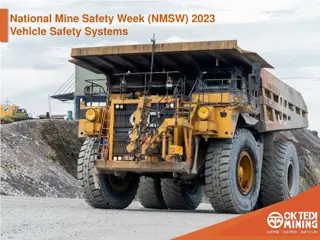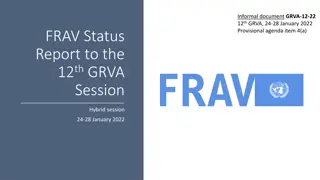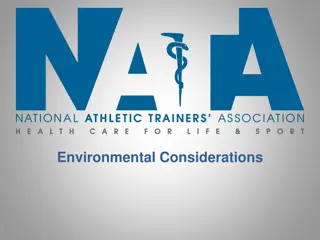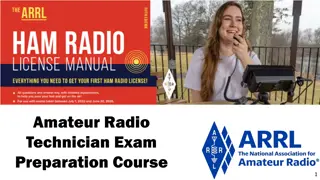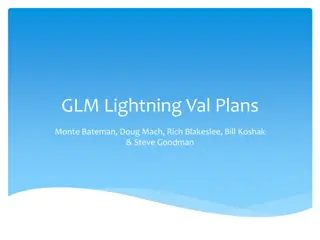Lightning Safety Guidelines and Recommendations
Lightning is a powerful force of nature that poses serious risks, leading to fatalities and injuries every year. Understanding the prevalence of lightning occurrences and implementing safety measures is crucial in mitigating these dangers. This guide covers essential information on lightning safety, including creating emergency action plans, identifying safe locations, determining criteria for postponing activities, planning for large venues, and providing first aid for victims of lightning strikes.
Download Presentation

Please find below an Image/Link to download the presentation.
The content on the website is provided AS IS for your information and personal use only. It may not be sold, licensed, or shared on other websites without obtaining consent from the author.If you encounter any issues during the download, it is possible that the publisher has removed the file from their server.
You are allowed to download the files provided on this website for personal or commercial use, subject to the condition that they are used lawfully. All files are the property of their respective owners.
The content on the website is provided AS IS for your information and personal use only. It may not be sold, licensed, or shared on other websites without obtaining consent from the author.
E N D
Presentation Transcript
Prevalence of Lightning Occurrences In US, 42 fatalities per year; 10 times as many injuries from strikes Of all deaths, about 15 % occur in organized sports; 25-30 % in recreational activities Areas of greatest incidence in US Gulf states, Ohio River Valley, front range of Rocky Mountains, and parts of Southwest Worldwide 24,000 deaths, 240,000 injuries annually
Lightning Safety Formalize a Emergency Action Plan for lightning safety Promote lightning safety slogans Develop a chain of command regarding decision making Identify A Weather Watcher Use a reliable means of monitoring local weather Identify safe locations for each sports venue Establish criteria for suspending and resuming activities
Determining Safe and Unsafe locations from lightning Safe locations include: Facilities with wiring and plumbing Metal Vehicles with rubber tires Unsafe Locations include: Shelters Refreshment stands Screened porches Open areas Tall objects Large bodies of Water
Criteria for Postponing and Resuming Activities Postpone or suspend if thunderstorm appears imminent Move all individuals completely within safe structures if storm is 5 miles away or closer Activities should be suspended until 30 minutes after last lightning strike is seen and last sound of thunder is heard The clock resets with each lightning strike within 5 miles
Large Venue Planning Pre planning is vital Have enough safe areas for anticipated teams and fans Have a way to alert spectators and vacate the areas quickly and efficiently
First Aid for Victims of Lightning Strikes Move to safe area when you are able Evaluate and treat, in this order ,for Apnea Cardiac arrest Spinals injuries Hypothermia Treat the Apparent Dead First !
Insert Your Institutions Lightning Policy Below
References Walsh K, Cooper M, Holle R, Rakov V, Roeder W, Ryan M. National Athletic Trainers' Association Position Statement: Lightning Safety for Athletics and Recreation, J Athl Train. 2013 Mar-Apr; 48(2): 258 270.






